Sound Performance Lab RackPack User manual
- Category
- Audio equalizers
- Type
- User manual

Manual
Vox Ranger
Graphic Equalizer For The Vocal Range
RackPack Module, Model 2718
1
"
4
4
*
7
&
&
2
4
*
(
0
7
-
7
0
9
3
"
/
(
&
3
L
L
L
065165
0/
°
°
°
°
°
°
°
°

2
RackPack: Vox Ranger
Manual Vox Ranger
Model 2718
Version 1.0 – 6/2008
Designer: Wolfgang Neumann
This user‘s guide contains a description of the product. It in no way represents
a guarantee of particular characteristics or results of use. The information in
this document has been carefully compiled and verified and, unless otherwise
stated or agreed upon, correctly describes the product at the time of packaging
with this document.
Sound Performance Lab (SPL) continuously strives to improve its products and
reserves the right to modify the product described in this manual at any time
without prior notice. This document is the property of SPL and may not be copied
or reproduced in any manner, in part or fully, without prior authorization by SPL.
SPL electronics GmbH, Sohlweg 80, 41372 Niederkruechten, Germany
Phone. +49 (0)2163 983 40
Fax +49 (0)2163 983 420
Email: info@soundperformancelab.com
Internet: www.soundperformancelab.com
CE Declaration of Conformity
Manufacturer: SPL electronics GmbH, Type of Equipment: Audio
Signal Processor, Product: RackPack/Vox Ranger, Model 2718,
Compliance Engineer: Wolfgang Neumann
Test base: EN50081-1:1992, EN50082-1:1992, EN60065:1993, EN61000-3-3:1995,
EN60065:2002, EN55013:2001, EN55020:2002, EN61000-3-2:2000, 73/23 EWG;
93/68 EWG.
We herewith declare, that the construction of the Vox Ranger, Model 2718, is in
compliance with the standards and regulations mentioned above.
Notes on environmental protection
At the end of its operating life, this product must not be disposed of
with regular household waste but must be returned to a collection
point for the recycling of electrical and electronic equipment. The
“wheelie bin“ symbol on the product, user‘s manual and packaging
indicates that. The materials can be re-used in accordance with their
markings. Through re-use, recycling of raw materials, or other forms of recycling
of old products, you are making an important contribution to the protection of
our environment. Your local administrative office can advise you of the respon-
sible waste disposal point.
WEEE Registration: 973 349 88
© 2008 SPL electronics GmbH. All rights reserved. Names of other companies
and their products are trademarks of their respective owners.

RackPack: Vox Ranger
3
Important Safety Information ..................................... 4
Hook Up ............................................................. 6
Scope Of Delivery ................................................... 6
Introduction ......................................................... 7
Rear Panel/Connections ........................................... 8
Wiring . . . ...... . . . . . . . ...... . . . . . . . ..... . . . . . . . ...... . . . . . . . ...... . 8
XLR Sockets, Lundahl I/O Transformers, Channel Split . . . . . ... 9
Control Elements ................................................... 10
On, LED Display . . . . . . . . ...... . . . . . . . ...... . . . . . . ...... . . . . . . . .... 10
OUTPUT, Fader ..... . . . . . . . ...... . . . . . . . ..... . . . . . . . ...... . . . . . . . .. 11
The Eight EQ Bands ... . . . . . . . ...... . . . . . . . ..... . . . . . . . ...... . . . . . . 12
Diagram of Filter Curves . . . . . . ...... . . . . . . . ...... . . . . . . ...... . . . . 13
EQ Table . . ...... . . . . . . . ...... . . . . . . . ...... . . . . . . ...... . . . . . . . ...... 14
Operation ............................................................ 16
EQ Principles . . . . . ...... . . . . . . . ...... . . . . . . . ...... . . . . . . . ..... . . . . 16
Technology .......................................................... 17
Bell Filters, Passive Filters, Advantages of Passive Filters ..... 17
Specifications ....................................................... 18
Option/Information on Lundahl Transformers
.....................
19
Copy Master: Recall Settings ....................................... 20
Guarantee ............................................................ 21
Content

4
RackPack: Vox Ranger
Important Security Information
Please note and retain this information. Carefully read and follow all
of the safety and operating instructions before you use the machine.
Be doubly careful to follow all warnings and special safety instructions
noted in this manual and on the unit. The following information refers
to modules built into the RackPack frame.
Connections: Only use the connections as described. Other connec-
tions can lead to health risks and equipment damage.
Water And Humidity: Do NOT use this machine anywhere near water
(for example near a wash basin or bath, in a damp cellar, near swim-
ming pools, or the like). In such cases there is an extremely high risk of
fatal electrical shocks!
Insertion Of Foreign Objects Or Fluids: NEVER allow a foreign object
through any of the machine‘s chassis openings. You can easily come
into contact with dangerous voltage or cause a damaging short circuit.
NEVER allow any fluids to be spilled or sprayed on the machine. Such
actions can lead to dangerous electrical shocks or fire!
OPENING THE DEVICE: Open the device only to fit or exchange mod-
ules. The fitting and/or exchange of modules should only be carried
out by qualified persons. In the light of possible physical damage
or injuries any manipulation is at your own risk. In order to avoid
any residual voltage, the device should be disconnected from any
power source at least 5 minutes prior to opening it. If you handle the
device improperly or ignore the manual (part of the delivery of the
RackPack frame) you risk to damage the device or expose yourself
to an electric shock. In these cases SPL electronics GmbH denies any
responsibility.
Electrical Power: Run this machine ONLY from sources which can
provide proper power at the prescribed rating. When in doubt about
a source, contact your dealer or a professional electrician. To be sure
you have isolated the machine, do so by disconnecting the power cord
from your wall connection. Be sure that the power cord plug is always
accessible. When not using the machine for a longer period, make sure
to unplug it from your wall power socket.
Power Cord Protection: Make sure that your power cord is arranged to
avoid being stepped on or any kind of crimping and damage related
to such event. Do not allow any equipment or furniture to crimp this
power cord.
Power Connection Overloads: Avoid any kind of overload in connec-
tions to wall sockets, extension or splitter power cords. Always keep
manufacturer warnings and instructions in mind. Overloads create fire
hazards and risk of dangerous shocks!

RackPack: Vox Ranger
5
Important Security Information
Lightning: Before thunderstorms or other severe weather, disconnect
the machine from wall power (but to avoid life threatening lightning
strikes, not during a storm). Similarly, before any severe weather, dis-
connect ALL the power connections of other machines and antenna and
phone/internet cables which may be interconnected so that no light-
ning damage or overload results from such secondary connections.
Air Circulation: Chassis openings offer ventilation and serve to pro-
tect the machine from overheating. NEVER cover or otherwise close
off these openings. NEVER place the machine on a soft surface (car-
pet, sofa, etc.). Make sure to provide for a mounting space of 4-5 cm/2
inches when mounting the machine in racks or cabinets.
Controls And Switches: Operate the controls and switches only as
described in the manual. Incorrect adjustments outside safe para-
meters can lead to damage and unnecessary repair costs. Never use
the switches or level controls to effect excessive or extreme changes.
Repairs: Unplug the machine and immediately contact a qualified
technician when you think repairs are needed – or when moisture or
foreign objects may accidentally have gotten in to the housing, or in
cases when the machine may have fallen and shows any sign of having
been damaged. This also applies to any situation in which the machine
has not been subjected to any of these unusual circumstances but
still is not functioning normally or its performance is substantially
altered.
In cases of damage to the power cord or its plug, first consider turning
off the main circuit breaker before unplugging the power cord.
Replacement/Substitute Parts: Be sure that any service technician
uses original replacement parts or those with identical specifications
as the originals. Incorrectly substituted parts can lead to fire, electri-
cal shock, or other dangers, including further equipment damage.
Safety Inspection: Be sure always to ask a service technician to con-
duct a thorough safety check and ensure that the state of the repaired
machine is in all respects up to factory standards.
Cleaning: In cleaning, do NOT use any solvents, as these can damage
the chassis finish. Use a clean, dry cloth (if necessary, with an acid-
free cleaning oil). Disconnect the machine from your power source
before cleaning.

6
RackPack: Vox Ranger
Fitting A Module
The fitting and/or exchange of modules should only be carried out by
qualified persons. Please read the manual of the RackPack frame. It
contains all information needed to fit a module as well as all safety
and notes and warnings. If you don‘t have the manual at hand, you can
download it like all SPL product manuals from our website.
Symbols And Notes
IN THIS MANUAL A LIGHTNING SYMBOL WITHIN A TRIANGLE WARNS
YOU ABOUT THE POTENTIAL FOR DANGEROUS ELECTRICAL SHOCKS
– WHICH CAN ALSO OCCUR EVEN AFTER THE MACHINE HAS BEEN
DISCONNECTED FROM A POWER SOURCE.
AN EXCLAMATION MARK (!) WITHIN A TRIANGLE IS INTENDED TO MAKE
YOU AWARE OF IMPORTANT OPERATIONAL ADVICE AND/OR WARNINGS
THAT MUST BE FOLLOWED. BE ESPECIALLY ATTENTIVE TO THESE AND
ALWAYS FOLLOW THE ADVICE THEY GIVE.
The symbol of a lamp directs your attention to explanations of impor-
tant functions or applications.
Attention
Do not attempt any alterations to this machine without the approval
or supervision of SPL electronics GmbH. Doing so could nullify com-
pletely any and all of your warranty/guarantee rights and claims to
user support.
• The module
• This manual
• Two Philips screws to mount the module to the back panel (if mo-
dule is delivered separately from the frame). Further screws needed
for mounting the module remain when you remove front and rear
covers from the RackPack frame.
Hook Up
Scope Of Delivery

7
RackPack: Vox Ranger
The Vox Ranger EQ Module is a graphic equalizer for the vocal range
with passive coil filters in eight bands. It employs bell filters, each with
individually optimized bandwidths, boost and cut values.
The concept of the Ranger EQs for the RackPack modular system is
characterized by two decisive features that separate them from tradi-
tional designs. First there is the basic idea of specialized modules for
typical instrument or vocal ranges. This follows a consistently musi-
cal approach, but also the design of each filter is based upon musical
demands alone—center frequency selection is not governed by techni-
cal ISO rules, but relies on our own experiences and the preferences of
well-known colleagues.
In contrast to statical graphic EQs with always the same center fre-
quencies in repeating octave distances, the Ranger EQ modules are
much better suited to work with specific instruments and their pecu-
liarities—and only different frequency ranges do allow to effectively
separate instruments in a mix.
The second characterizing feature follows the idea of a modular design
and affects both the filter technology and the user interface. Why did
we chose a graphic EQ design? For a fully parametric EQ with all neces-
sary controls there would be space for one band on the module front.
Our graphic EQ offers eight bands—a bandwidth control is less impor-
tant, and different EQ modules can be combined to configure a large
and, if needed, complex EQ system.
But a traditional graphic EQ with an active filter design did not seem to
match our idea of a holistically musical approach. We decided for a rare
technical solution: the combination of passive filters with a graphical
user interface. Based upon individually specified, custom-made coils,
these filter designs convince with outstanding musical qualities.
Finally, the general advantage of modular systems becomes clearly
obvious when planning individual systems: A vocal recording channel
with RackPack modules can be configured in very specific ways, while
a complex EQ system may have a completely different focus.
Introduction

8
RackPack: Vox Ranger
Rear Panel/Connections
Wiring
PS
.JYFS
*OTFSU4FOE
$POWFSUFS
0VUQVU
PS
.JYFS
*OT3FUVSO
$POWFSUFS
*OQVU
$IBOOFM
4QMJU
0
6
5
1
6
5
0
6
5
1
6
5
0
6
5
1
6
5
0
6
5
1
6
5
*
/
1
6
5
*
/
1
6
5
3BDL1BDL

RackPack: Vox Ranger
9
The Vox Ranger is fitted with one XLR input and two XLR outputs for
balanced operation.
Pin-wiring of all XLR sockets:
Pin 1 = GND, Pin 2 = hot (+), Pin 3 = cold (-)
Discrete balancing stages for both in- and output provide high common
mode rejection and are capable of driving long cables (depending on
the capacity of the cables and the following input balancing stages).
The illustration shows the correct pin-wiring of the balanced XLR sock-
ets if an unbalanced wiring is required.
Lundahl I/O Transformers
The Input and Output 1 stages may be transformer-balanced if ordered
(please refer to page 20 for detailed information). Otherwise, all
inputs and outputs are balanced electronically. Output 2 cannot be fit-
ted with a transformer. It is actively decoupled and allows for the input
signal to be split into two output signals.
Channel Split
The channel split option through Output 2 always provides alterna-
tives in processing or routing of the input channel. While one output
may be used directly for mixing, the second output can be routed in
any other way—for example to further RackPack modules, to other
effect units etc.
Rear Panel/Connections
XLR Sockets, Transformers, Channel Split
*OQVU
0VUQVU
CBMBODFE
VOCBMBODFE
CBMBODFE
VOCBMBODFE
(/%
IPU
DPME

10
RackPack: Vox Ranger
ON, LED Display
Control Elements
ON
With the ON button you can turn the device on or off. The ON button is
illuminated when the device is active.
Relay hard bypass circuits ensure signals to be directly switched from
input to output in the case power failures – this “Power Fail Safety“
feature guarantees signal flow in any situation.
Signal LED
The SIG. LED indicates that an audio signal reaches the input with a
level above -20 dB. This LED helps the operator especially in complex
setups to determine immediately whether the Vox Ranger actually
receives any signal.
Overload LED
The OVL LED indicates a potential internal overload. It begins indicat-
ing approximately 3 dB ahead of any expected overload to leave head-
room for peak levels.
Overloads must be avoided to exclude audible distortions. The gaining
is still perfect in most cases when the OVL LED is illuminating shortly
since there’s still a headroom of 3 dB for peak levels.
Permanent illumination of the OVL LED indicates overloads with pos-
sible audible distortions. Reduce the OUTPUT Gain control if the OVL
LED illuminates permanently until the OVL LED goes out or flashes
shortly.
1
"
4
4
*
7
&
&
2
4
*
(
0
7
-
7
0
9
3
"
/
(
&
3
L
L
L
065165
0/
°
°
°
°
°
°
°
°

RackPack: Vox Ranger
11
OUTPUT, Fader
Control Elements
OUTPUT Stage
With the OUTPUT control you can readjust levels that were changed by
previous EQ settings.
For example, if you have by and large applied cut values to the signal,
the overall output level can be lifted again to meet the input level’s
value.
The same of course applies vice versa: simply lower the output to com-
pensate for boosts that may result from your processing.
If source and receiving units do not display levels, rely on setting the
output by ear. An A/B comparison can be made with the ON switch.
Please note that differences in sound, resulting from EQ processing,
should not influence your loudness judgement when setting the out-
put level by ear.
Fader
The Vox Ranger module offers nine fader controls. The upper eight fad-
ers control the eight frequency bands, the lowest fader controls the
output stage. All faders are manufactured by Bourns and show high-
grade quality specifications. Their handling is featuring a perfect bal-
ance between smoothness and resistance.
All center positions are detented and all faders are illuminated to
ensure safe operation also in dark environments.
1
"
4
4
*
7
&
&
2
4
*
(
0
7
-
7
0
9
3
"
/
(
&
3
L
L
L
065165
0/
°
°
°
°
°
°
°
°

12
RackPack: Vox Ranger
The Eight EQ Bands
Each filter is designed as bell filter with individually optimized band-
widths and boost/cut values. Each filter is regulated by a fader con-
trol. The frequency range around the center frequency can be boosted
(fader to the right into direction “+”) or can be cut (fader to the left into
direction “-”) directly.
Here is a short list with examples for setting each band. This list is of
course not complete or demands general validity—we just want to give
some suggestions and orientation to start from.
Band 1: 4kHz Center Frequency
Boost: improves intelligibility for vocals (chant).
Cut: reduces risk of feedback (live).
Band 2: 2.8 Hz Center Frequency
Boost: gets vocals up front, intensifies presence,
improved intelligibility for voices (speech).
Cut: masks wrong intonation, more air in backings.
Band 3: 1,6 kHz/Band 4: 800 Hz/Band 5: 560 Hz/Band 6: 420 Hz
The main vocal area from about 500 to 2000 Hertz is covered from
these four bands. Particular fundamentals can be processed here.
Band 3 reaches up into the presence area, Band 6 processes the
foundation.
Band 7: 330 Hz Center Frequency
Boost: more warmth, fuller sound (pay attention to larger dis-
tances to the microphone).
Cut can bring more clarity.
Band 8: 220 Hz Center Frequency
Boost: “Belly“ of singing voices.
Cut can reduce
pulpy sounds/improves clarity
.
Control Elements
1
"
4
4
*
7
&
&
2
4
*
(
0
7
-
7
0
9
3
"
/
(
&
3
L
L
L
065165
0/
°
°
°
°
°
°
°
°

RackPack: Vox Ranger
13
Diagram Of Filter Curves
Control Elements
The diagram shows the different filter characteristics. The lower bands have relatively narrow bandwidths for fundamental tones. The upper
bands have broader bandwidths to process groups of overtones in common.

14
RackPack: Vox Ranger
EQ Table
All 0 35 - cut sub harmonics
All 50 + fuller sound deep instruments
All 50 - reduces boomy sounds of d. instruments
All 100 + harder bass deep instruments
All 150 250 +/- warmth, reduces pulpy sound of d. instr.
All 500 1,7K + bass denition, phone sound, presence
All 1700 8K +/- sharp sounds, intelligibility, attacks
All 8000 20K + more air, transparency, brighter, hi-
All 12000 20K - red. noise/hiss, digital “S“ sounds
Bass
50 60 - improves assertion, room for kick drum
Bass 60 80 + fuller sounds
Bass 75 150 +/- main impact of bass instruments
Bass 350 400 + accentuates bass lines
Bass 500 800 + more clarity
Bass 600 1,2K + bass tone/material sound (wood)
Bass 2000 3K + improves attack, metal strings, slap
Kick Drum
35 75 + deep bass punch, supports kick drum
Kick Drum 60 80 + more punch
Kick Drum 80 100 - makes room for bass
Kick Drum 90 100 + punch, assertion on small monitors
Kick Drum 250 400 - reduces wooden and pulpy sounds
Kick Drum 300 500 + accentuates, cripsy
Kick Drum 350 400 - reduces cardboard sound
Kick Drum 2K 4K +/- emphasizes/reduces drumhead kick
Snare
140 260 + snares sound fuller, rounder
Snare 200 400 + more punch
Snare 300 500 - softens snares
Snare 200 2K + resonance frequencies
Snare 3K + more attacks
Snare 5K 6K + emphasizes typical snare sounds
Snare 8K 12K + punch
Toms
80 120 + emphasizes tone of oor toms
Toms 80 110 - reduces sustain of oor toms
Toms 240 400 + more belly
Toms 400 - reduces hollow sounds
Toms 300 500 - softer sounds
Toms 3K 6K + more attack for deep toms
Toms/Perk 7K + more attack
Cymbals
200 - reduces gong sound
Cymbals 800 1K - reduces metal in a hi hat
Cymbals 6K 8K + more glitter on ride cymbals
Cymbals 10K 11K - reduces harshness
Instrument
Frequency
up to +/- Effect

RackPack: Vox Ranger
15
EQ Table
Vocals
0 150 - avoids collision with bass and kick
Vocals 100 140 + lls deep vocals
Vocals 180 300 - slenderizes spoken voices
Vocals 200 - reduces pulp in vocals
Vocals 200 350 + belly of vocals
Vocals 200 400 - clarity
Vocals 300 400 + more warmth, full-bodied
Vocals 600 +/- foundation
Vocals 1,8K 4K + presence; vocals up front
Vocals 3K 4K + lead vocals up front/more clarity
Vocals 3K 4K - more air in backings
Vocals 3K - masks wrong intonation
Vocals 4K 6K + singing voices: more intelligibility
Vocals 4K 6K - feedback-sensitive range (live)
Vocals 7K 11K - reduces sibilants
Vocals 8K 10K + brightens vocals; presence
Vocals 12K + more brilliance, air
Guitar
80 120 + fuller basses with acoustic guitars
GTR/Keyb. 100 - less boom, more clarity
Guitar 100 200 -
resonances (106Hz, 212Hz) of ac. guitars
Guitar 180 280 + makes guitars fuller, more fat
GTR/Keyb. 250 500 - less pulp
GTR/Keyb. 300 400 + more warmth
Guitar 800 1K - reduces cheap sound of e-guitars
GTR/Keyb. 1,2K 2K -
reduces dullness, metal; room for vocals
GTR/Keyb. 2K 3K +/- more/less aggressive; overexposure
Guitar 3K 5K + more attack for e- and ac. guitars
Guitar 3K - masks badly tuned guitars
Guitar 5K + brightens up e- and ac. guitars
Guitar 5K - softens thin guitars
Guitar 10K 12K + brightens up guitars
Piano
80 160 + saturated depth
Piano 2,5K + (narrow band) boost: Honky Tonk sound
Piano 3K + more attack for lower tones
Piano 5K + more attack for normal tones
Piano 10K + brightens up
Piano/Bläs. 100 300 + more warmth and belly
Brass
100 300 + fuller sound
Brass 700 1,5K - reduces metal
Brass 4K 8k + places instruments up front
Brass 4K 8K - reduces sharpness
Strings
200 300 + fuller strings
Strings 7K 11K +/- emphasizes/reduces brilliance
x

16
RackPack: Vox Ranger
Operation
EQ Principles
First cut, then boost: The hearing system is more used to energy
reductions in a frequency range, thus boosts attract more attention.
That is, a 6 dB boost is perceived to be similar in amount to a 9 dB
cut. Therefore when wishing to emphasize one frequency, it is typi-
cally better first to consider a reduction in others. The result will bring
more transparency and clarity as well as reduce possible unwanted
coloration of the signal.
Boost harmonics: Harmonic enhancement is one of the foremost tech-
niques for increasing the clarity and definition of an instrument. One
overtone area for vocals is around 5 kHz and accentuates presence.
Note that each instrument will have at least two frequencies where EQ
can achieve a greater clarity or brilliance.
Cutting fundamental levels: Cutting fundamental frequencies pro-
vides for a perceived increase in harmonics and is therefore an effec-
tive alternative to boosting harmonic levels. This is a common practice
in Rock/Pop productions that can be effective in all musical recording
genre.
Boosting fundamental levels: Inexperienced audio engineers will
often first try to make corrections by boosting fundamentals, some-
thing which in fact should be the last thing one considers. Boosting
fundamentals typically lowers clarity and produces a muddy sound.
If two instruments are playing the same part and thereby produce the
same fundamental, raising these levels will lead to a decrease in the
sonic difference between them, (i.e., will make the two instruments
sound more alike and lower their intelligibility in the mix). This is also
true when two instruments play similar parts in the same key.
Exception: When an instrument sounds thin or small, boosting the
fundamental can help. Or perhaps a microphone was poorly placed
or the harmonics had been raised excessively through EQ. Finally,
increasing fundamental levels can also play a constructive role when
instruments play alone or as soloists with others in the background.

RackPack: Vox Ranger
17
Bell Filters, Passive Filters, Advantages of Passive Filters
Technology
Bell Filters
A bell filter boosts or cuts a chosen frequency‘s energy with a maxi-
mum amplitude and a definable frequency range around this fre-
quency with a fall off of up to 3 dB to both sides. The chosen frequency
with the maximum amplitude is called center frequency—it takes
place in the middle at the peak of the response curve. The response
curve forms a bell, but bell filters are also often referred to as peak
filters (also refer to page 13, “Diagram Of Filter Curves”).
Passive Filters
The filters in a passive network employ no intrinsic amplification ele-
ments and therefore need no external power, which means in effect
that they can really only cut the energy of a chosen frequency. In order
to expand this capability to include boosting the energy of a band-
width (that is, to be able to boost and cut frequencies), the overall fil-
ter input signal level is reduced. Based on this overall reduction and
relative to the original input signal, one can achieve a further cut or
boost in the form of a return to that original signal level. Thus a pas-
sive filter is always followed by an amplifier which is responsible to
regain the initial energy reduction.
Advantages of Passive Filters
• Typically coil inductance in virtually all active filters is achieved
through simulation. True passive coil filters, on the contrary, can
only deliver the genuine, characteristic sound associated with
inductive components.
• Inherent distortion elements of active filters are ruled out by pas-
sive filter design.
• For any number of reasons stemming from design and component
advantages over active filters, passive filters achieve a very natural
aural quality and through their harmonic treatment (THD, distor-
tion, phase response, etc.), offering at the very least, a clear sonic
alternative—in our ears often an extremely attractive one.
• All passive filter components (variable resistor, capacitor and coil)
work in concert to produce this beautiful sonic result. An important
part of this process is played by coil and condenser loading and
saturation characteristics. The resulting difference in latency from
characteristically extremely fast reaction of active filters provides
for more pleasant, musical sonic qualities. We tend to perceive
these attributes in terms of an increased suppleness and transpar-
ency, with perceptibly improved, silky highs and robust basses.

18
RackPack: Vox Ranger
Specications
Audio
Frequency Range: 10 Hz-30.000 Hz
CMR@ 1kHz: -85 dBu @ 100 Hz, -80 dBu @1 kHz
THD @ 1kHz: 0,03% @ 0 dBu/0,01% @ +10 dBu
Noise, A-weighted: -83 dBu
Dynamic Range: › 107 dB
Fast Fourier Transformation (FFT): › -85 dBu (@ 1 kHz)
Input
XLR connection, electronically balanced
(optionally transformer-balanced)
Impedance: balanced ›20kOhm/unbal. ›10kOhm
Max. Input Level: +22 dBu
Outputs
Output 1: XLR connection, electronically balanced
(optionally transformer-balanced)
Impedance (‹600 Ohm): bal. ca. 150 Ohm/unbal. ca. 75 Ohm
Max. Output Level: +22 dBu
Output 2: XLR connection, electronically balanced
Impedance (‹600 Ohm): bal. ca. 150 Ohm/unbal. ca. 75 Ohm
Max. Output Level: +22 dBu
Control Elements
Signal LED (SIG.): -20 dBu
Overload LED (OVL): +21 dBu
Dimensions & Weight
Height x Width x Depth 132 x 46,9 x 315 mm
ca. 5,2x1,85x12,4 in
Weight 0,45 kg/0,99 lbs
Weight w. Transformers 0,65 kg/1,43 lbs
0 dBu = 0,775 V. Specications subject to change without notice.

RackPack: Vox Ranger
19
Copy Master: Recall Settings
1
"
4
4
*
7
&
&
2
4
*
(
0
7
-
7
0
9
3
"
/
(
&
3
L
L
L
065165
0/
°
°
°
°
°
°
°
°
Artist:
...........................................
Album:
...........................................
Title:
...........................................
Engineer:
...........................................
Track(s)/Group(s):
...........................................
Date:
...........................................

20
RackPack: Vox Ranger
As an option, the DynaMaxx RackPack module can be fitted with input
and output transformers from Lundahl. The transformer options can
only be ordered by purchase, a later upgrade is not possible.
Information On Lundahl I/O Transformers
Transformers have a pleasant sound characteristic, especially the low
end sounds rounder and more full-bodied. The top end benefits from a
softer and silky atmosphere without being emphasized.
Further advantages are aspects of improved operational safety: gal-
vanic insulation excludes the transmission of damaging currents.
Electromagnetic, high frequency or digital interferences have no influ-
ence on the signal quality, hum potentials are cancelled out.
From our listening experience we can recommend Lundahl I/O trans-
formers in any case, and their improved operational safety is an advan-
tage that can not be overestimated in any critical or complex studio,
broadcast or sound reinforcement installation.
All SPL products come with a two-year manufacturer’s guarantee
against defects in material or assembly from the date of factory deliv-
ery. Tubes have a guarantee period of 3 months.
End users are supported in the two-year guarantee through their dis-
tributor or dealer. In such cases, please contact your dealer for full
guarantee conditions and service.
Direct SPL product support requires product registration. Please fill
out the guarantee card enclosed in the package legibly in printed let-
ters and send it directly to SPL. Or use the online registration form
that may be reached at www.soundperformancelab.com (international
clients) or www.spl-usa.com (US clients).
Lundahl Transformers
Option
Guarantee
-
 1
1
-
 2
2
-
 3
3
-
 4
4
-
 5
5
-
 6
6
-
 7
7
-
 8
8
-
 9
9
-
 10
10
-
 11
11
-
 12
12
-
 13
13
-
 14
14
-
 15
15
-
 16
16
-
 17
17
-
 18
18
-
 19
19
-
 20
20
Sound Performance Lab RackPack User manual
- Category
- Audio equalizers
- Type
- User manual
Ask a question and I''ll find the answer in the document
Finding information in a document is now easier with AI
Related papers
-
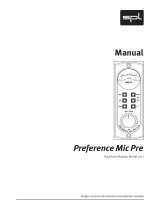 Sound Performance Lab 2711 User manual
Sound Performance Lab 2711 User manual
-
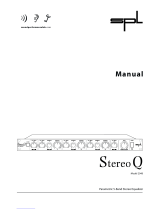 Sound Performance Lab 2048 User manual
Sound Performance Lab 2048 User manual
-
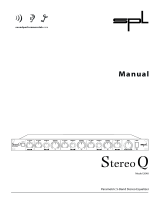 Sound Performance Lab 2048 User manual
Sound Performance Lab 2048 User manual
-
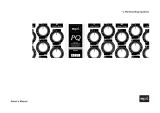 Sound Performance Lab PQ Recording Equalizer User manual
Sound Performance Lab PQ Recording Equalizer User manual
-
 Sound Performance Lab RackPack 2710 User manual
Sound Performance Lab RackPack 2710 User manual
-
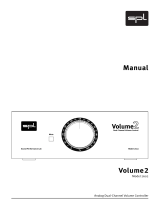 Sound Performance Lab Analog Mixer User manual
Sound Performance Lab Analog Mixer User manual
-
 Sound Performance Lab 2595 User manual
Sound Performance Lab 2595 User manual
-
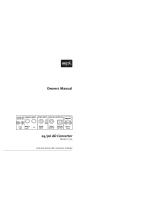 Sound Performance Lab 2376 User manual
Sound Performance Lab 2376 User manual
-
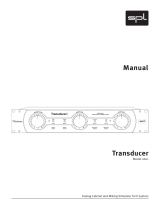 Sound Performance Lab Transducer 2601 User manual
Sound Performance Lab Transducer 2601 User manual
-
SPL 2273 User manual
Other documents
-
American DJ SP1X3LUNT User manual
-
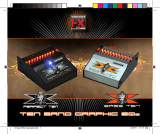 Whirlwind FXEQ10P Perfect Ten 10-Band Graphic EQ Pedal Owner's manual
Whirlwind FXEQ10P Perfect Ten 10-Band Graphic EQ Pedal Owner's manual
-
Medeli 2020 Owner's manual
-
Motorola ASTRO 25 GTR 8000 User manual
-
PRESONUS StudioLive 16.0.2 USB Owner's manual
-
PRESONUS SL-1602 USB User manual
-
PRESONUS StudioLive 16.0.2 Owner's manual
-
PRESONUS StudioLive 16.4.2 Owner's manual
-
PRESONUS StudioLive 24.4.2AI Owner's manual
-
PRESONUS StudioLive 16.4.2 User manual





























